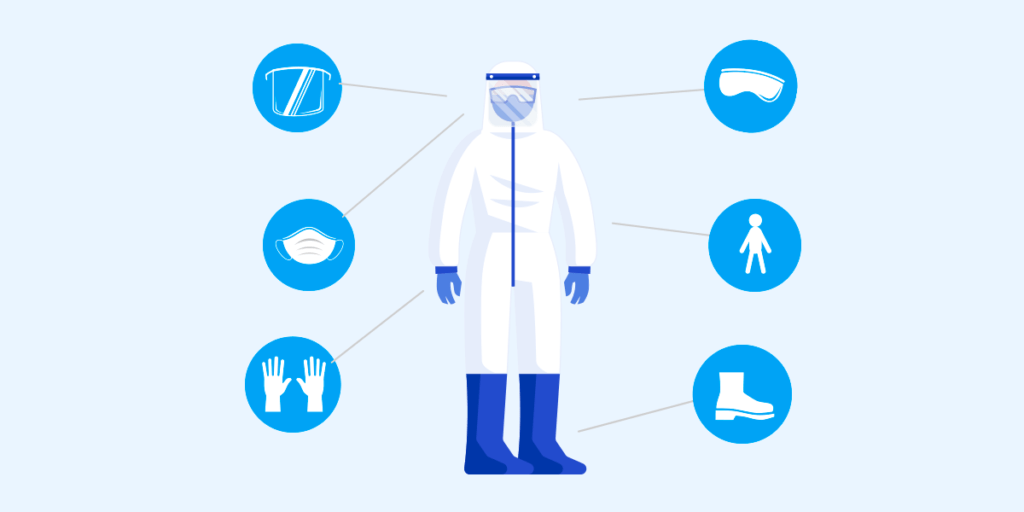A global challenge
The COVID-19 pandemic has wreaked havoc in the world and disrupted many areas of our lives. The virus is spreading like a wildfire, and whatever measures we are taking against it are just aren’t enough. The pandemic has forced a complete shut-down of industries around the world and disrupted supply chains. Healthcare systems across the world are struggling to handle the growing number of patients and are facing a severe shortage of critical medical equipment. Hospitals are running out of personal protective equipment for doctors. There is a huge shortage of face masks, face shields are ventilators.
Epidemiologists across the world are encouraging governments to test more people for coronavirus. The foremost line of defence against the virus at the moment is more testing. The more governments can test, the more they can locate and isolate patients. However, labs and test centers across the world are facing a huge shortage of test kits.

Role of 3D printing in fighting the pandemic
In this scenario, the 3D printing community around the world is looking to play its part in the fight against this pandemic. Researchers are exploring ways in which 3D printing can play a crucial role and help save lives. The prime consideration at the moment is to ease the pressure on health care systems and ensure the safety of health workers by providing them with the equipment required to save lives while protecting their own.
In a time when industries have come to a halt, there is a growing number of health equipment manufacturers facing a shortage of parts. Many manufactures rely on multiple suppliers and they cannot assemble the end products until all suppliers provide parts on time. 3D printing can play a crucial role by enabling companies to produce the required parts in-house rather than waiting for the suppliers. This can help companies to produce healthcare equipment with no disruption and delays. It can also help them ramp up production rates which is a key in our race against the coronavirus.
An enormous challenge is that since the 3D printed medical equipment has to intrude on the human body, governments and healthcare authorities need to issue specific guidelines regarding what kind of equipment we can use. 3D printed medical equipment must have approval from health authorities before they can use it in life-saving procedures. In the absence of government-supervised procedures, there is a risk that unapproved equipment might find its way to the hospitals and labs.
Many 3D printing firms are trying to help by introducing 3D printed medical equipment and making their designs available to the public. Under normal circumstances, companies don’t sell their designs for free. Firms are providing free CAD files on their websites and also providing free consultancy regarding the materials required to print those models. In addition, engineers and firms have already printed products helpful in combatting the virus.

Big Valve Masks (BVM)
Big Valve Masks or BVMs are emergency respiratory systems used to help the patients breathe. We can see the systems as makeshift ventilators. The device was designed by a Spanish engineer, Mr. Magí Galindo at the Hospital Parc Taulí in Sabadell. The model has a simpler design and can be assembled quickly because of a few assembly parts. Once the assembly is started, a total of 50 to 100 units can be manufactured daily.
3D printed nasal swabs
As mentioned earlier in the article, the biggest weapon against the virus is more testing. Nasal swabs are used in testing kits and like all other medical equipment, there is a huge shortage of nasal swabs. This is hindering the testing procedure and limiting the number of tests. Formlabs, a USA-based 3D printing firm, is moving towards 3D printing nasal swabs. The firm is in contact with authorities and is preparing a mechanism through which it can start large-scale production of nasal swabs. Once in operation, the process is expected to produce up to 150,000 nasal swabs per day.
3D printed oxygen valves
Hospitals in Italy are now using 3D-printed oxygen valves used to connect patients’ masks to oxygen equipment. An Italian 3D printing company by the name of Isinnova has started bulk production of the valves.

3D printed splitter tubes
The biggest challenge to healthcare facilities at the moment is the lack of ventilators. Ventilators are the last resort used to redeem patients with respiratory failure. Many patients around the world are losing lives because of a lack of ventilators. Innovative minds are designing 3D printed splitter tubes through which a single ventilator can be used for up to 4 patients. A firm by the name of Prisma Health has produced a device called VESper for this purpose. The device has already been approved by the health authorities under Emergency Use Authorization (EUA).
3D printed door handles and hand sanitizer holders
Besides producing life-saving equipment, 3D printing could help us in preventing the spread of the COVID-19 disease. Materialize, a 3D printing firm has manufactured a hand-free 3D printed door handle. The handle can be utilized with one’s forearms. This way, the chances or spreading or contracting the virus through hands in minimized. Thinking on similar lines, an engineer in Saudi Arabia has developed a 3D printed hand sanitizer holder. The holder reduces the need to touch the bottle repeatedly thereby reducing the chances of contaminating the bottle.



